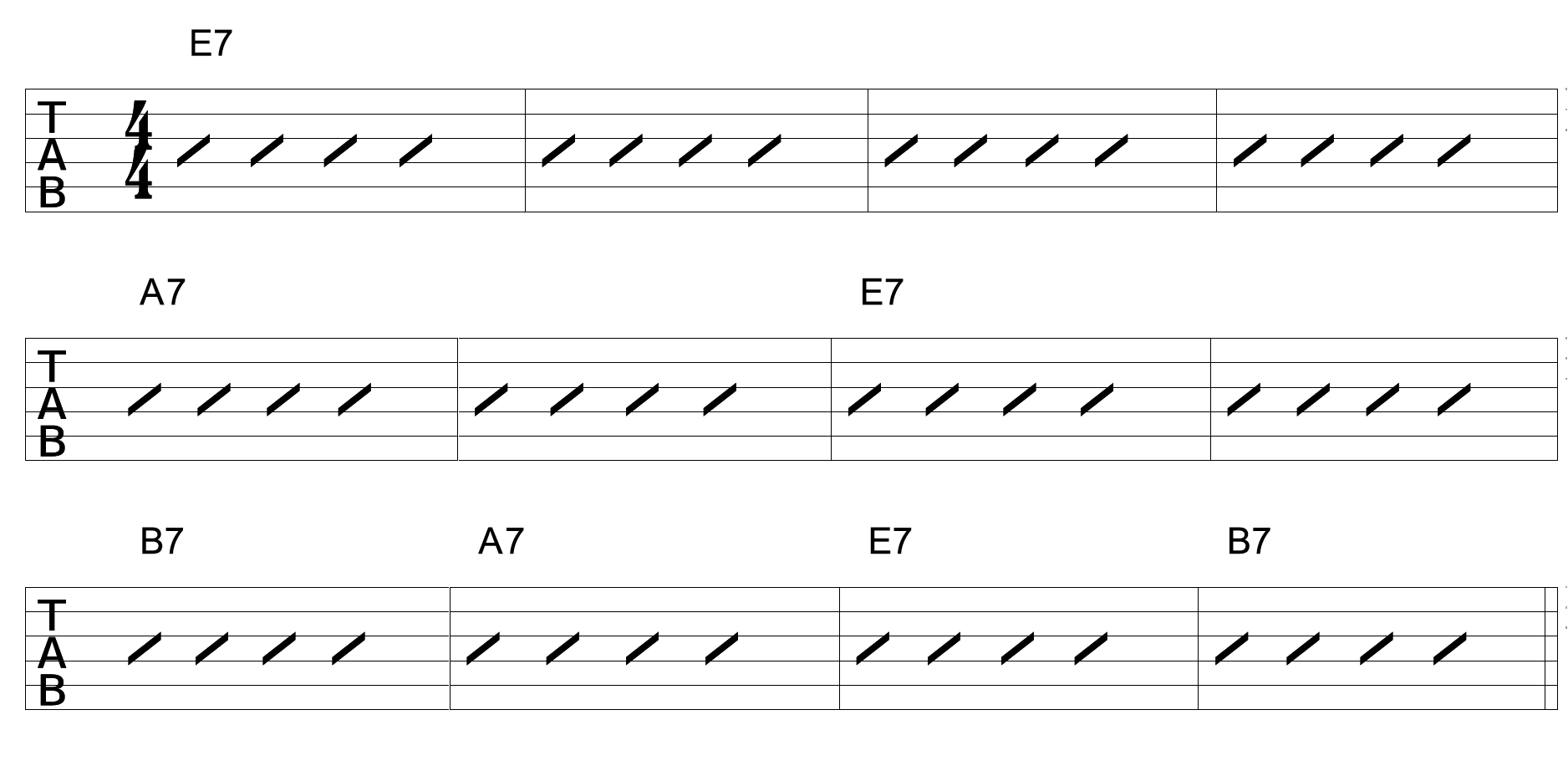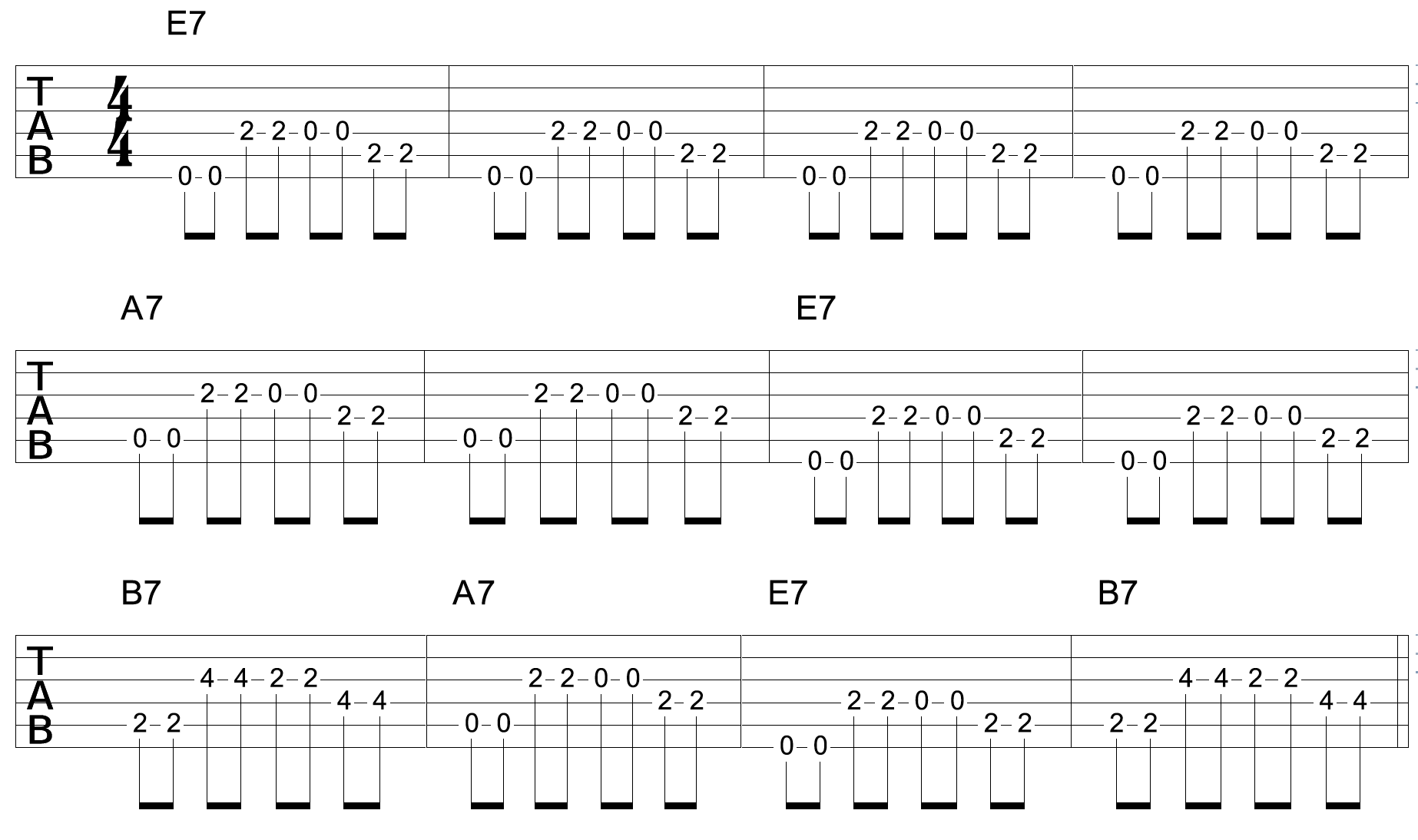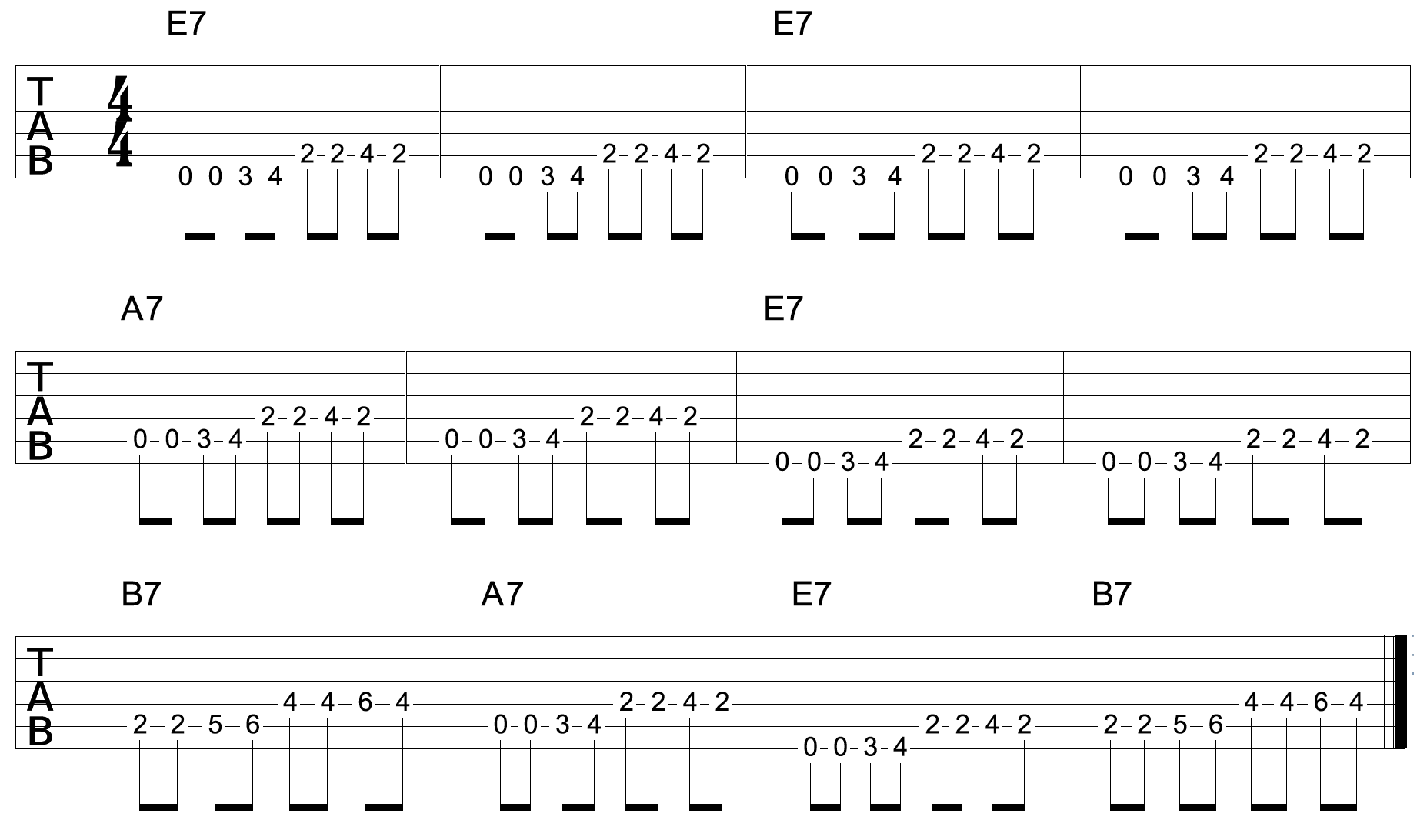The 12 bar blues is a universal language amongst musicians. Even if you don’t consider yourself to be a blues guitar player, chances are you’ll find yourself in situations where you’re jamming it.
Why?
Because it’s easy to be up and playing and sounding great with other musicians you have never played with before. Playing the blues is a whole lot of fun!
Knowing a bunch of basic chords and being able to keep time is enough to get your way through a blues jam. However, it can become a little mundane and boring for you if this is all you do.
There are more ways you can play through a blues than you have days left on this earth. It’s almost endless, which is great, because it keeps things interesting and less predictable.
All About that Bass
Today, we are going to focus on the lower end of a blues, the bass, and see what we guitarist’s can do in this area.
Before we get stuck into this however, take a look at the following 12 bar blues form in the key of E:

You want to be sure you are familiar with the progression above. It’s the basis for all you will ever do in a 12 bar blues, so you need to make sure you know it well.
Blues Bass Lines
It is very common for a guitar to take on the role of a bass when playing through a 12 bar blues. Sometimes playing either along with the bass, or taking on the role of a bass if there is no actual bass guitar. For example, if you are playing in an acoustic duo or similar.
Bass line 1:
Here is a simple bass riff played out over the 12 bar blues in E:

The example above brings a lot of movement to a 12 bar blues and even sounds great in isolation. You could also use this example as a melody or in a guitar solo.
Bass line 2:
Here is another example of a bass line for guitar. This one extends on the first example above:

Watch the video below for a demonstration of these bass lines. You will first hear me play through the first bass line example in isolation. Then, I will play the second bass line example while a melody comes in over the top. The third time I play thorough the 12 bar blues, it will be a little bit more of a jam with some chord embellishment and extensions being played as well:
Conclusion
There are more variations that can be done with the bass part of a blues. A great place to start, however, is by learning the examples presented to you in this article. Upon getting them into your fingers, be sure then to apply them to your blues jams.
This is the most important step. If you simply learn something in the context in which it is being introduced to you only, in this case an article, then you haven’t really learned anything at all. You must always apply the things you learn to your own playing.
Experiment with these bass lines by coming up with your own variations. It’s a lot of fun and brings a whole new dimension to your blues jams. Most importantly, it deepens your understanding of the role of the bass in music.
For another look into the blues check out our post on the blues shuffle.
About the Author:
Simon Candy runs his own guitar school out of Melbourne, Australia, where he helps and guides people from all walks of life become the guitar players they always wanted to be. Simon is fluent in a number of musical styles including rock, blues, jazz, and fingerpicking. He also offers the very best online acoustic guitar lessons

